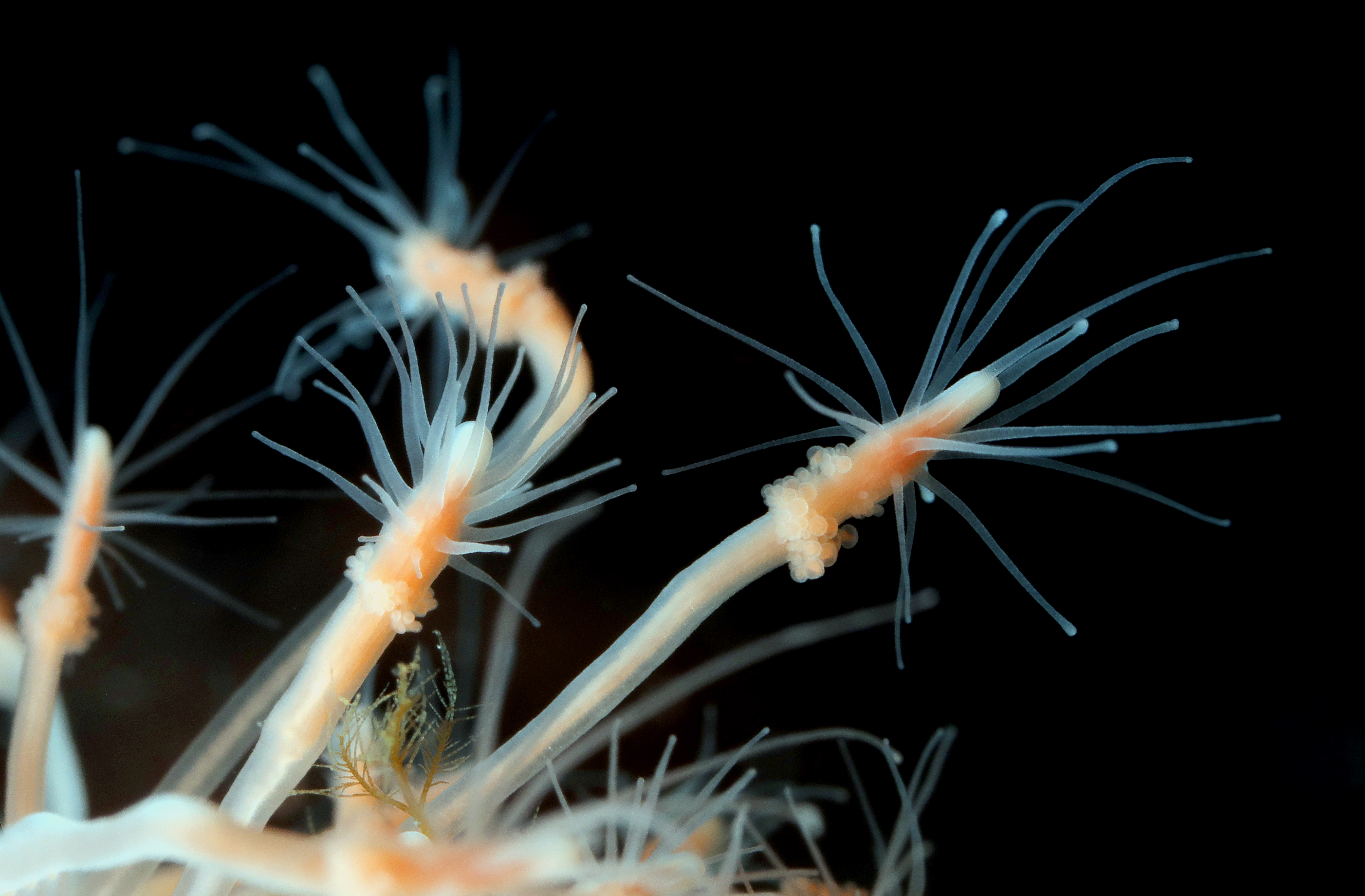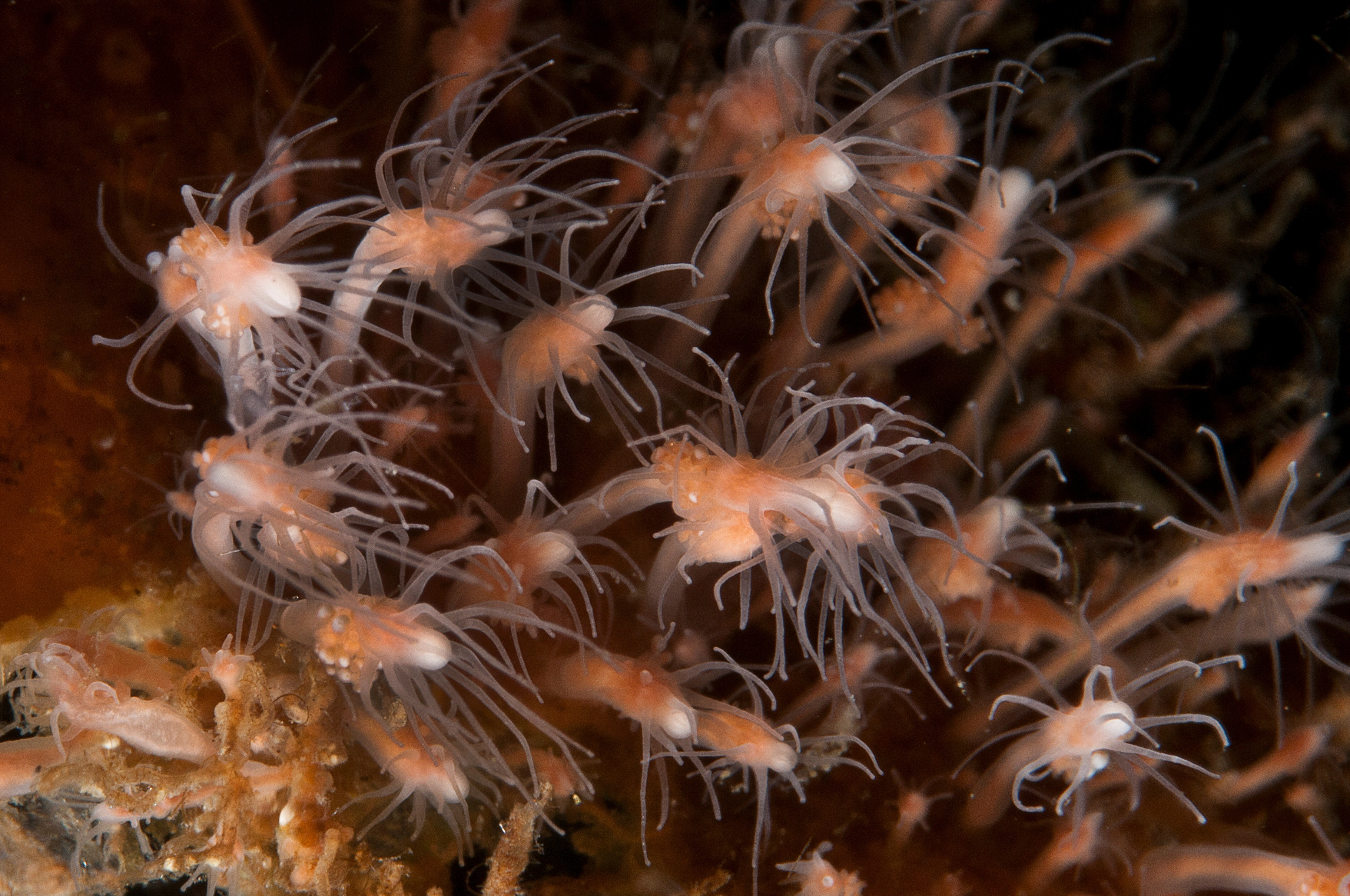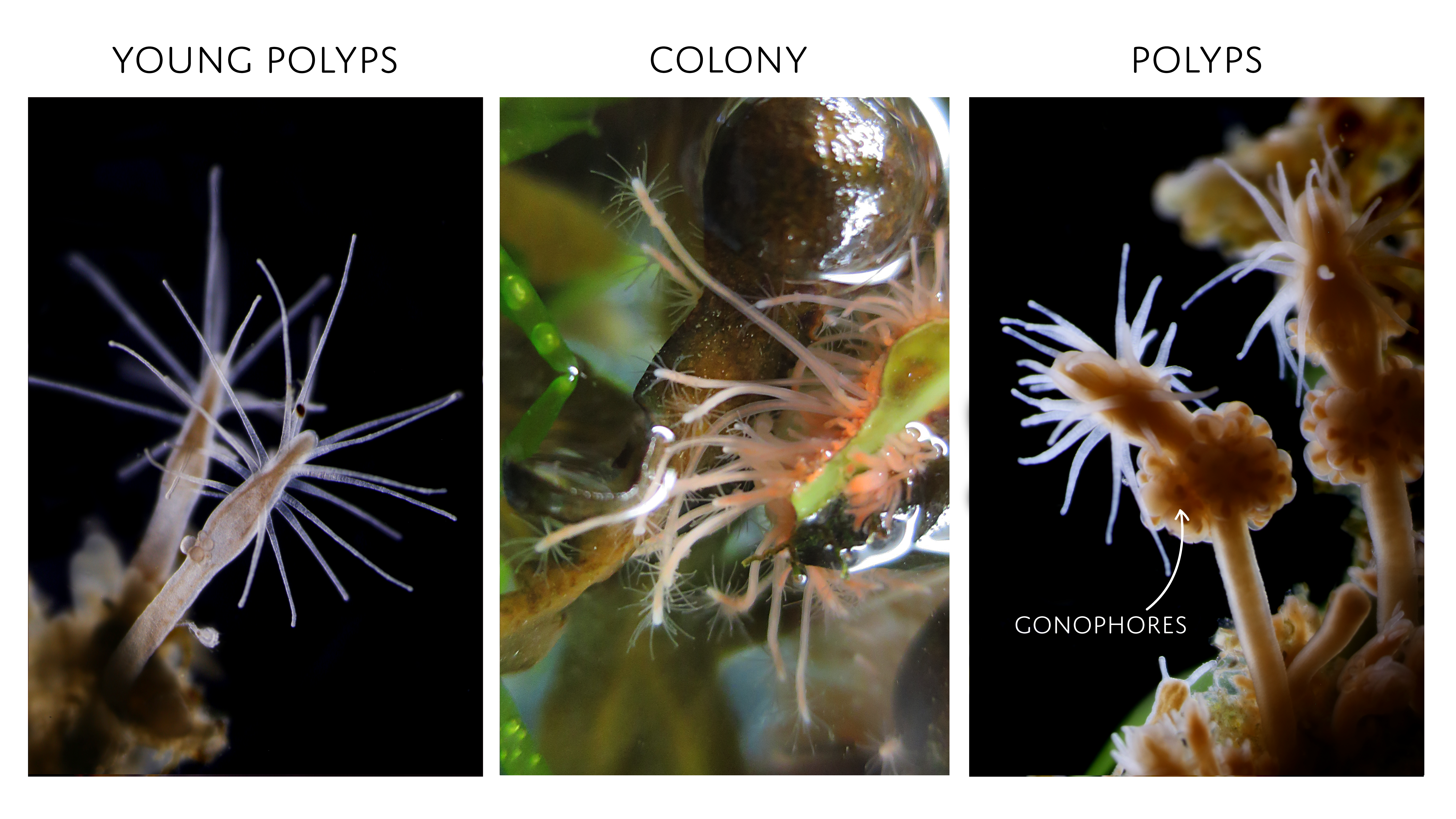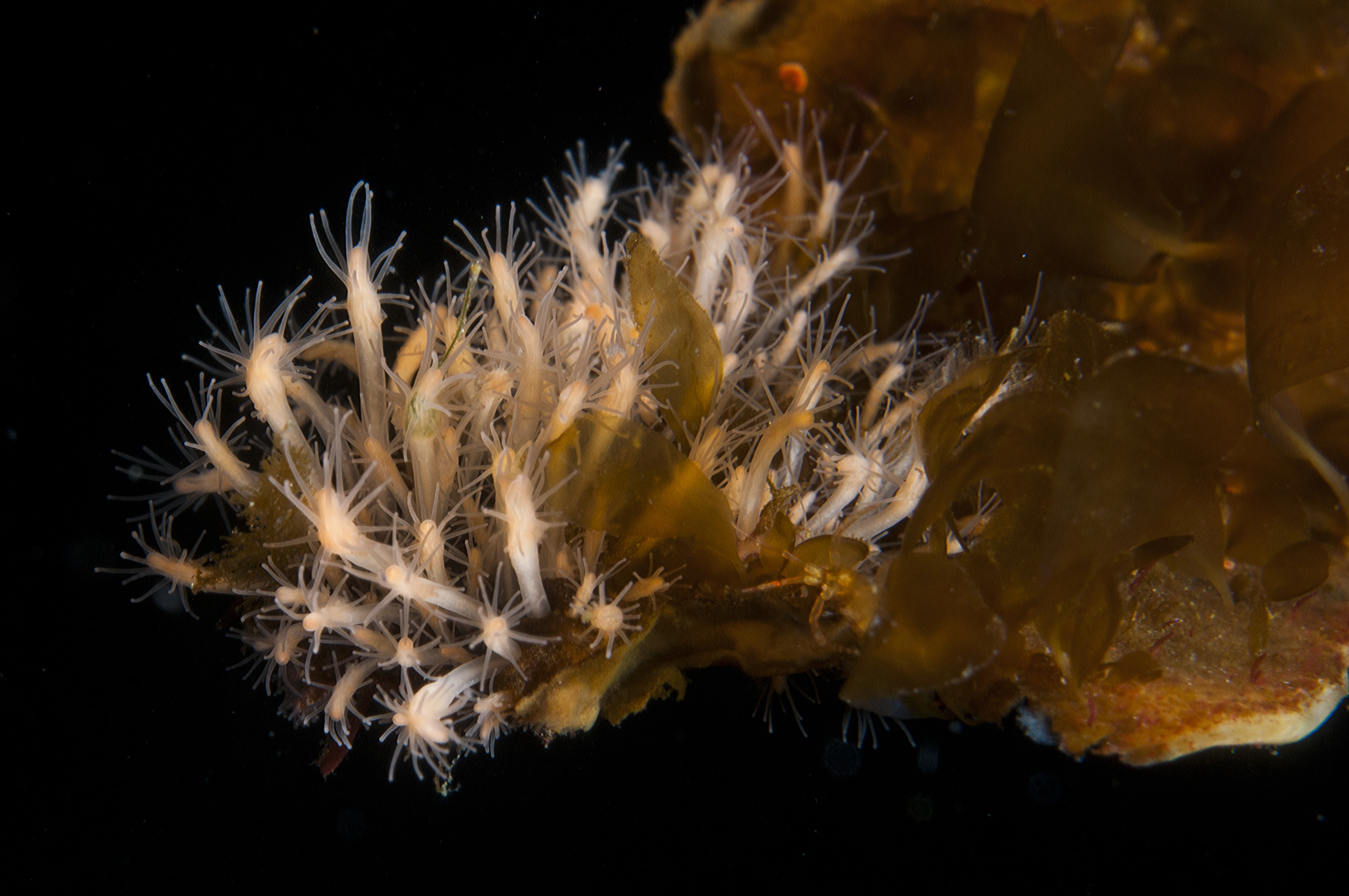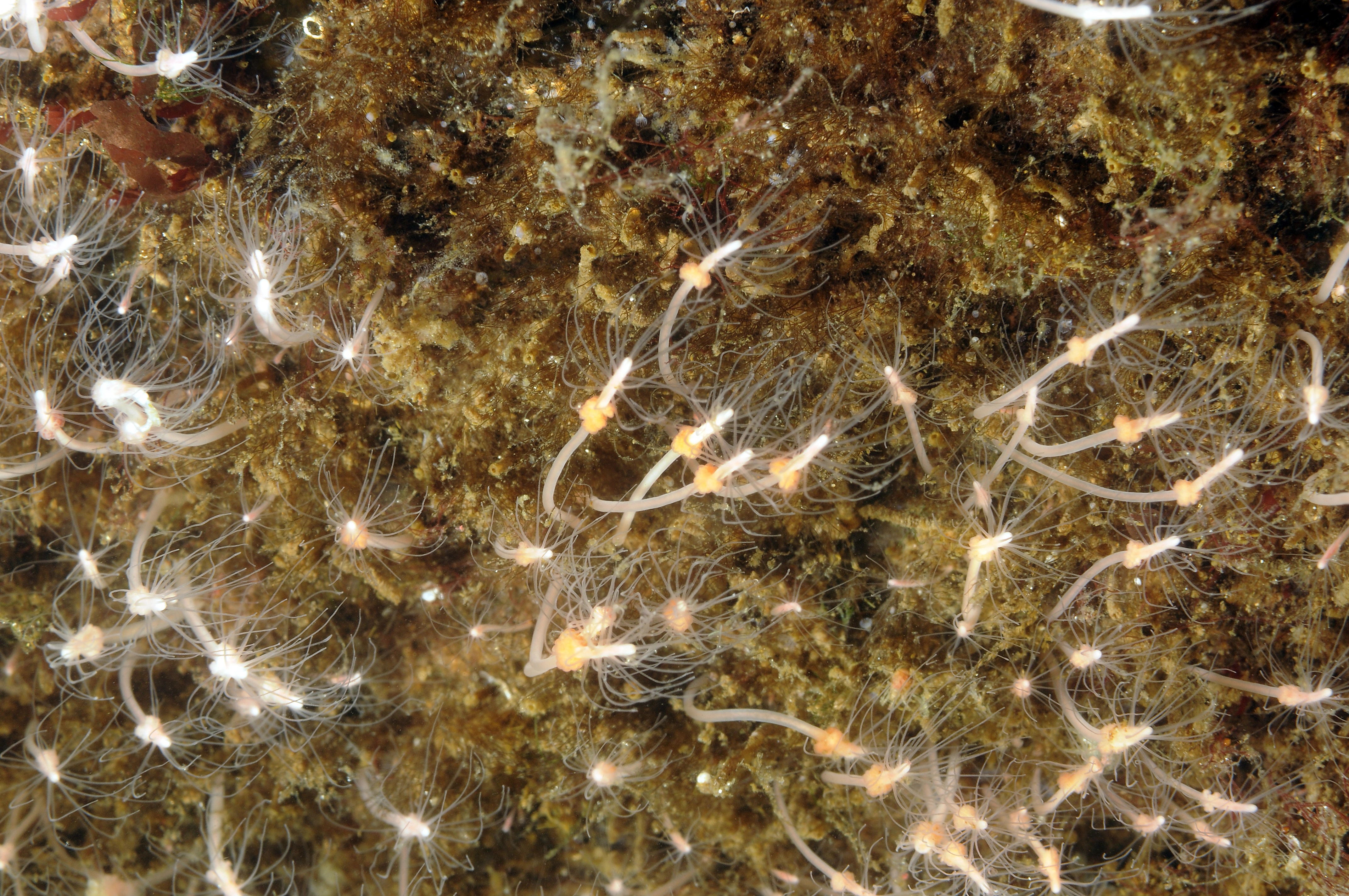Clava multicornis
Detail of a colony with reproductive polyps.
The colonies of Clava multicornis are unique among the Hydractiniidae because they live in the intertidal zone and are adapted to withstand exposure to the air for extended periods. The polyps of this species are conspicuous and easy to find among the mats of brown algae, where they form bright pink/orange colonies that cannot be mistaken for any other species of hydrozoan. Clava multicornis is known in Norwegian as tangkøllepolypp or tangblomst, in reference to its habit of growing on brown algae from the littoral zone (tang).
The pink/orange colour of the gonophores of C. multicornis is characteristic of the species.
Identification
Hydroids
The colonies of C. multicornis are composed of several polyps that are all similar to each other. These polyps are very large in comparison with all the other species in the family, being able to reach 30 mm when fully extended. Each polyp has 20–40 tentacles scattered in the upper part of the body, not arranged in whorls. In fertile colonies all or almost all polyps will be bearing gonophores. The gonophores are small fixed sporosacs and they are distributed in a band around the gonophore, just below the tentacles.
Different views of the polyp stage of Clava multicornis showing young polyps without gonophores (left), a colony at the interface water/air (middle), and the position of gonophores on adult polyps (right).
Look-alikes
Clava multicornis is a species easy to identify thanks to its habitat, preferred substrate, and the distribution of the tentacles on the polyps. It cannot be confused with any other species of hydractiniid in Norway.
The colonies of C. multicornis have clustered polyps when they grow on brown algae. In the past this colony form was considered a different species (Clava squamata), but now we know that the shape of a colony depends on environmental conditions.
Biology, ecology and behavior
This species can locally be the most abundant and conspicuous hydrozoan in localities with good tidal flow. The colonies grow preferably on brown algae, especially Ascophyllum nodosum and several species of Fucus, but they have also been reported from other substrates including rocks and barnacles. Their main depth range is between the mean tide level and the low water mark of ordinary spring tides, and therefore the polyps are adapted to exposure to air and are able to withstand desiccation. Under good conditions the colonies are perennial. While C. multicornis is mostly a marine species, there are records of colonies living in estuaries with reduced salinities.
The colonies of C. multicornis often have dispersed polyps when they grow on rocky substrates.
Distribution
This is one of the most commonly reported hydractiniids in Norway, where it is distributed from the Arctic Ocean to the Skagerrak and inside the fjords. It is mainly a North Atlantic species that occurs in the Northeastern Atlantic from the Arctic Ocean south to northern Portugal, including also the North Sea, Iceland, and the western Baltic Sea.
References
Schuchert P (2008). The European athecate hydroids and their medusae (Hydrozoa, Cnidaria): Filifera Part 3. Revue suisse de Zoologie 115(2):221–302.
Schuchert P (2012). North-West European athecate hydroids and their medusae: keys and notes for the identification of the species. Field Studies Council. Synopsis of the British Fauna (New Series) No. 59. 364 pp.
